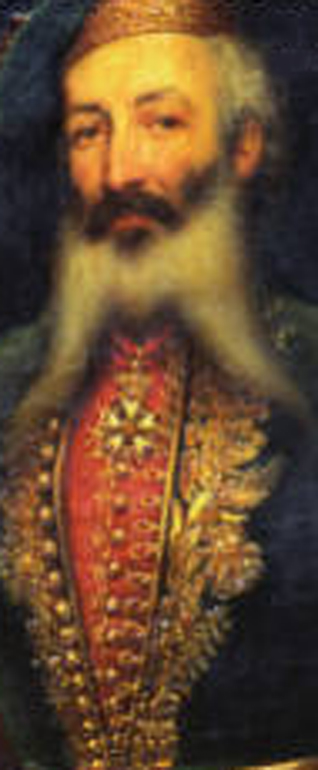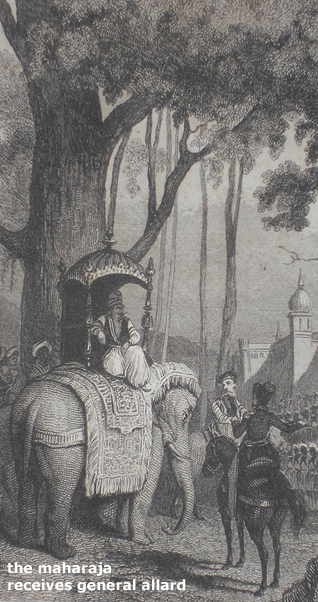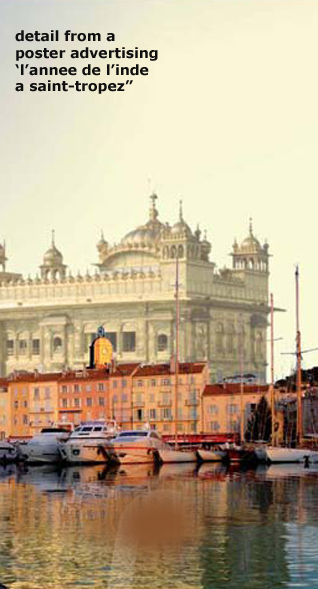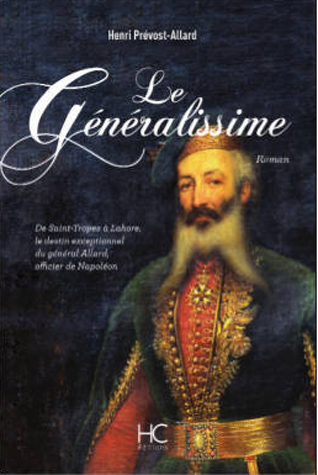History
The French Connection
B. N. GOSWAMY
St. Tropez, that seductive seaside resort on the French Riviera -- celebrated for its leisured beaches, located not far from Cannes, home at one time to great musicians and artists and later to the glitterati of Europe -- is not associated in our minds with having any connection with Punjab.
The place has a long history which goes back at least to the sixth century BC: Phoenicians, Romans, Arabs, even the Japanese, and naturally the French, figure in it.
But Punjab and the subcontinent?
One does not even pause at the thought. All that the place remains linked with is names like Coco Chanel and Brigitte Bardot and Pink Floyd and, of course, with topless sunbathing.
But St Tropez, it turns out, does have a Sikh and Punjab connection, and I was made aware of it by a little book that Jean-Marie Lafont, tireless and devoted historian of the Punjab, kindly sent me not long back.
[Jean-Marie Lafont is the author of the monumental works, “Maharaja Ranjit Singh: Lord of The Five Rivers” (2002), and “Ranjit Singh: The French Connections“ (2001).]
“St. Tropez Celebrates India“, it was titled, and referred to an exhibition that was held in that town just two short years ago on the theme of the French who had entered the service of the Maharaja of the Punjab, Ranjit Singh.
The event was occasioned by the fact that one of the most distinguished of those Frenchmen was originally a native of St. Tropez: General Jean-Francois Allard.
One knows him, of course, as the man chiefly responsible for building the formidable Fauj-i-Khaas units of the Maharaja's army on European lines, and one has seen him with his Punjabi family in paintings.
But the St. Tropez connection, I was unaware of till now.
The redoubtable General figures prominently in M. Lafont’s crisply written and informative account: his birth at St Tropez in 1775, service in the Napoleonic armies, winning the Legion of Honour, suspension from service in France, travel to the East, including Iran where he served as a colonel in the Persian army, further travel to Punjab and entering the service of the Sikh Emperor in 1822, and distinguishing himself greatly in that service before returning to France in 1834, and coming back to the Punjab two years later.
But the account is not all about General Allard.
Other major figures, some of them at the head of other units of the Sikh army, appear in it: the foreign generals, among them Court and Ventura and Avitabile, and the locals, among them General Ilahi Baksh, Diwan Ajudhya Prasad, Colonel Sheikh Basawan.
A tapestry of men and events is woven, but it is the French contribution that runs -- in the nature of things -- like a golden thread through it. There are snippets of the private lives that the Europeans led, their marriages and their offspring from local wives, their subordinates and their entertainments.
"Whilst the house of General Ventura, built by himself and Allard, is average in terms of size", wrote the Austrian traveller, Baron Charles Hugel, who visited them in Lahore, the capital of the Sikh Empire, "it combines oriental splendour with the comfort of a European residence. On the walls of the entrance hall, before the row of pillar, are representations of the reception of two French officers into the Court of Ranjit Singh, with depictions of several thousand people. The second room is adorned with an array of small mirrors in gilded frames. The house was lit up this evening and twenty-five dancers performed for us to plaintive music before we set off some fireworks."
Victor Jacquemont, another Frenchman who came to the Punjab, wrote a detailed account of the time he spent with Allard and company, and spoke of lunches and dinners cooked by a whole posse of "Indian, Georgian, Persian, Armenian, Kashmiri and Punjabi cooks".
But it was not all luxury and comfort: the Europeans fought fierce battles on behalf of the Maharaja, triumphed over rebels and recalcitrants, took on diplomatic missions, and built the Sikh army into the kind of fighting machine that elicited everyone’s admiration, including the enemy’s.
What I found especially fascinating in M. Lafont’s account was his emphasis on the interest that the French and other Europeans took in things that were all around them in the Punjab. The archaeological interest of Generals Ventura and Court -- the discovery and uncovering of the great Buddhist stupa at Manikyala, near Rawalpindi, for instance, or the famous Kharoshthi inscription that was sent by them to James Prinsep -- the rare coins the French collected, the painting atelier they supported, if not maintained, the commission of illustrating the French classic, “La Fontaine’s Fables“, to Imam Baksh Lahori, are all part of this absorbing story, and we read about it.
Of very special interest in all this is something I had no idea of: the interest that the French took in the shawls of Kashmir -- a favourite project of Maharaja Ranjit Singh himself.
The industry had almost died out in Kashmir in the early years of the 19th century because of the catastrophic conditions prevailing there. The Maharaja, after his conquest of Kashmir in 1819, did a great deal to revive it, one learns, by taking personal interest in the industry, the trade, and the craftsmen.
But it was through the French in the Punjab that the Kashmiri shawl reached France where it became almost an obsession, a great fashion statement to wear it.
The story is long: how some of the Maharaja’s officers were partially paid not in cash but in the form of bales of shawls which they started sending to European markets; how General Allard’s half-brother took a veritable cargo of shawls to St. Tropez in 1831; how links were established between Kashmiri shawlmakers and traders in Europe, especially France, through the French; how designs travelled between Kashmir and France; how the British Governor-General, Auckland and his sister, Emily Eden, personally commissioned Allard with shawl orders which "dazzled them when they were delivered".
One of the most ‘influential’ of the shawls that went to France belonged to General Allard and his wife.
And the General’s wife?
"Bannou Pan Dei" is how she is referred to: "a young princess of the Himalayan foothills". From a Pahari royal family?
Clearly, Bannou must here stand for ‘Banu’, a kind of title reserved for high-born ladies, and ‘Pan Dai’, very Pahari sounding, must have been her own name. We see her in a by-now well-known family portrait of the General, painted by Imam Baksh, in which we see Allard seated on a terrace with "Bannou Pan Dei" seated close to him, and their five children on the floor around them. A secretary stands near the General, document in hand; two women attendants stand at the sides, one of them carrying a baby in her arms, and the other pouring tea into a cup.
Glimpses of some buildings, and of a garden, appear at the back.
Post-script: General Allard died in Punjab and his grave is in Lahore, Punjab. In 1834, he had, however, built a house for his wife in his hometown of St Tropez. There now a city square and a main street are named after the General, and his former home has been named the "Pan Dei Palace".
[Courtesy: Tribune. Edited for sikhchic.com]
May 26, 2014






